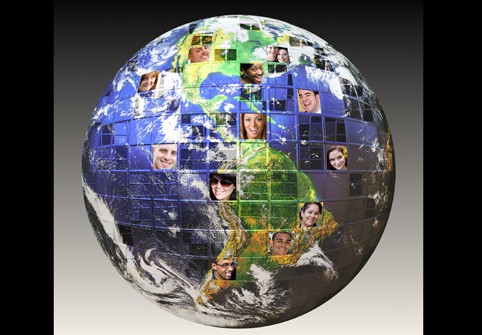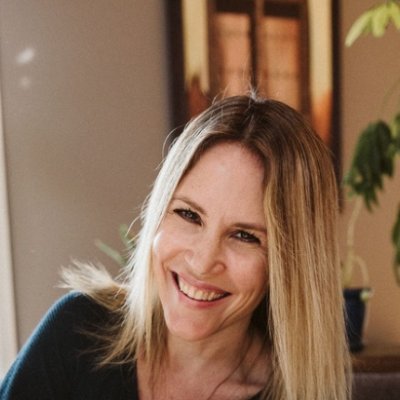Life’s Universal Themes Capture Student Engagement

As educators, we often ponder how we can capture the big ideas in order to create increased student engagement? We recently interviewed two educators who are utilizing Big History Project at their schools to do just that. Big History Project creates opportunities for blended science and humanities coursework and is used in a variety of ways to spark engagement and get students thinking BIG about life, the universe, and our interconnectedness to life around us. For more information on Big History Project, see Big History: An Organizing Principle for a Compelling Class, Block or School.
Ridge and Valley Charter School.
Traci Pannullo is a curriculum coordinator and leadership team member at Ridge and Valley Charter School in New Jersey. The K-8 charter school’s mission is based on ecological literacy. Ridge and Valley’s K-8 curriculum integrates all of their content. The teachers, called guides, are facilitators and the school emphasizes collaboration and democratic decision making processes. The school sits on a 17 acre property–creating limitless opportunities for project-based and expeditionary learning.
The premise of the school, says Traci, is “looking at human relationships and relationships with the natural world. We look at time from this larger perspective that Big History also takes, as we are all part of this larger story. We discovered Big History and how Big History was bringing these ideas to the school level. This dovetails with our curriculum and the school’s mission already.”
Ridge and Valley Charter School uses Big History in 6th, 7th, and 8th grade with 5 guides (teachers) and 45 students. The 5 guides work with students for 3 years, and Big History is implemented over a 3 year loop. They incorporate 3 units each year. Other than a math class, the rest of the day at Ridge and Valley is unscheduled. Students work on content-specific work and projects, and skills are taught within the context of larger projects.
Maplewood K-8.
We also interviewed Amy Hiebel, a 7th and 8th grade teacher at Maplewood K-8 in the Edmonds School District in Edmonds, Washington. Years ago, Amy saw and loved the Powers of Ten video, by Ray and Charles Eames, which was first published in 1977. Amy learned that this video is part of Big History Project’s collection of extensive videos to engage students in the big ideas around science and history. At Maplewood K-8 in Edmonds, Amy uses Big History Project across 2 years in 7th and 8th grade science courses.
A conversation with Big History educators reveals some compelling benefits of this philosophy:
- Emergence. Ridge and Valley Charter School focuses on the concept of collective intelligence and emergence, which includes how ideas, culture, thinking, evolution, movement, and language all emerge over time. Students are also then able to connect to the concept of emergence as middle school students. Guides pose questions such as “What is emerging within you?” and “What is changing inside of you?” while students study similar emergence concepts within the universe.
- Shifting the paradigm for how students see themselves. Traci said, “We use the story of the universe and the bigger context of time and space to show how we are all interconnected. This is also the larger mission of our school, which is helping us to shift the paradigm for how students see themselves in a larger context.”
- Talking to students about stardust. Traci said, “At a very young age, we talk about how the kids are all stardust when they are little; these themes are embedded in the way we work with students. By the time they reach middle school, the students’ language is fantastic and the resources have been a great way to focus the efforts.”
- Curriculum expands students’ AND teachers’ thoughts about our universe. Amy said, “I have a chemistry degree and have been teaching for 25 years. I have seen connections myself that never got before. My 7th graders know all elements up to iron are made into fusion and stars and my students are getting big ideas of things I did not know when I was their age.”
- Social studies can be married with science. Amy said, “Big History does a good job explaining the theory of knowledge. How do we know what we know? How have people’s ideas about the universe changed over time? The kids are able to look at this from a social studies point of view. I love that it brings in some of the social studies and marries all of that with science.”
How does Big History create engagement, teach with the Common Core in mind, flip the classroom, and personalize the learning?
- Common Core and Cross-Content Collaboration. Big History is set up to do common core well. Students have to utilize primary and secondary sources and write essays on short essay topics. Students all use the same vocabulary. Amy said, “In my science class, I am using the same outlines as English and Social Studies class. We use a 3 pronged thesis statement and each paragraph will have topic sentence, and evidence, and explain the evidence. This brings down the classroom walls. If you work with your teaching partners, what you learn with one subject area helps in other subject areas.”
- Impact on Personalization. The high degree of personalization is a significant factor in the engagement level of students. Traci said, “The guides move through the Big History Project curriculum in ways that are meaningful for student projects. We don’t necessarily go through a unit sequentially, but rather we look at how it compliments our existing curriculum framework. Guides really think through what pieces we need to use or fit best in terms of activities, assessments, articles and other resources. Students can access the different resources themselves, and a high degree of engagement is created.” Amy spoke specifically about students’ desires to know more about why they are here. As they are growing and changing in middle school, this is of particular interest to students: “All throughout Big History, the content connects back to students. It’s interesting to students. Not only is this the story of the universe but how did you get here?”
- Learning happens anytime, anywhere. At Ridge and Valley Charter School, there is an expectation that learning happens anytime, anywhere. When concepts or ideas are discussed from Big History Project, students are examining how that concept or idea is also present in their own lives or their own community. As Traci said, students realize that the learning “is bigger than what I am learning about in my classroom. Big History is organized in a way that makes students be able to take action. It gets students engaged and encourages critical thinking and they consider themselves a change agent. They engage in action and make a difference.”
- Blended Learning. Amy said, “Students from the beginning think of Big History as an online community. They have an email and log in. We start off talking about Big History as just another story- a modern scientific story. We talk about origin stories. It is a way for the students who come from a variety of backgrounds to engage in the curriculum. ‘This is a story. I don’t have to dismiss it and I can take it or leave it.’”
- Flipped Classrooms. Amy went on to speak about how easily Big History is set up for a flipped classroom. “There are short introduction videos and questions that go along with it. There are different materials online; students watch 12 minute video clip for homework, then discussion, then lab work. There is a really easily available website and the kids navigate it well.”
Amy summed up Big History when she said, “The content is very rich, and the coolest aspect is them learning that all of knowledge is interconnected. Content areas in schools are fake. Knowledge is knowledge. We have created these separations. The kids can see all the content is interconnected. They see knowledge as part of the big story.”
This blog is brought to you by The Nellie Mae Education Foundation as part of a series on blended humanities. For more stayed tuned for the Getting Smart on Blending Middle Grade Humanities bundle and see the other posts in this series:







0 Comments
Leave a Comment
Your email address will not be published. All fields are required.